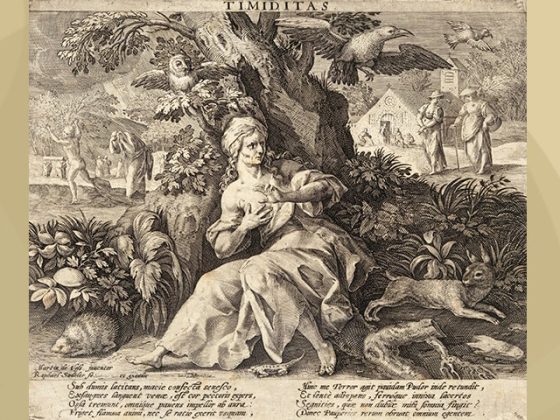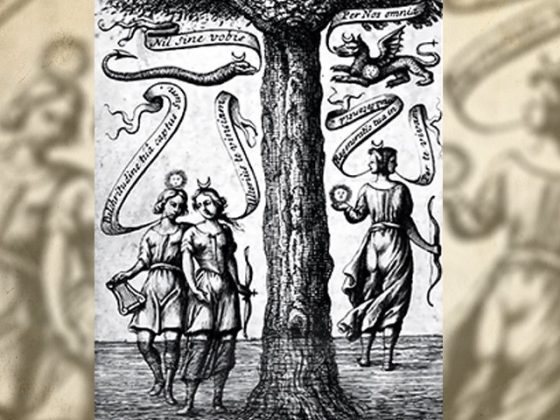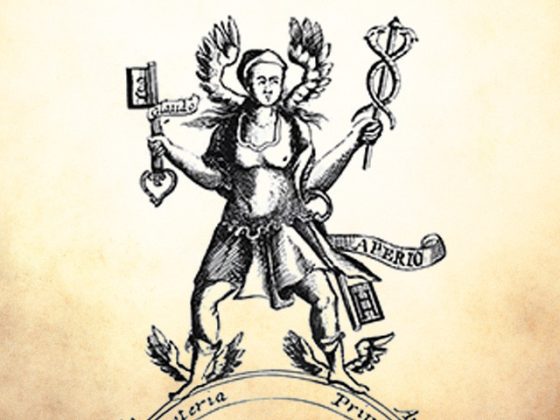Dearly beloved companions:
On this occasion I send you an engraving taken from a book that in its Spanish edition of 1703 was entitled…
…MORAL THEATRE OF HUMAN LIFE, IN A HUNDRED EMBLEMS WITH THE ENCHIRIDION OF EPICTETUS AND THE TABLE OF CEBES, PLATONIC PHILOSOPHER.

To begin with we will say that in the prologue of the book it is explained that the publisher of this book, having acquired the original plates that Otto Venio ─famous painter of the States of Flanders (1556-1629)─, published it at another time under the title of Emblems of Horace, since they were based on the Latin verses of that author which appear on each page, and earnestly requested for this printing that he accompany his emblems with some discourses in the form of explanations of them.
The prologue is not signed and the name of the author who makes the comments on the Emblems of Horace is unknown.
This engraving, friends, is entitled at the top of it with these words: “STUDY IS THE CAUSE OF TRANQUILITY.”
However, Gnostically speaking, it would be better to entitle it “MEDITATION AND PRAYER ARE THE CAUSE OF TRANQUILITY.”
The engraving is accompanied by a verse that reads as follows:
“The one who dedicated himself
To the study of Virtue,
Neither fear, nor regret
May cause him to worry,
For he knows how to banish them.”
Certainly, dear readers, he who learns to take refuge in the science of meditation will become a spectator of all that happens around him, without identifying himself with the events that Nature or mankind unleash around him. This is the reason for the bearded man who, huddled under a shield, attentively observes the violence of others like him, swallowed up by the “I” of anger, who try to attack a character who flees in terror towards the sea like the rabbit who, frightened, seeks refuge wherever it may be.
The same lesson is given to us by the two ladies who, holding each other's waists, remain undaunted while one of them carries under one arm a huge book that, supposedly, serves as a consolation with the instructions it contains on the discipline of knowing how to abstract oneself from the Mayavic illusionism that keeps our humanity hypnotized.
Likewise, at the bottom of this illustration we see two people seated. Most likely it is a man and a woman. The one on the right appears to be a man who has taken off a mask and holds it in his left hand. It is good to know that the word person, in Latin, translates into ‘mask', and, certainly, all human beings are nothing more than a bunch of masks that we change daily while we face various events or impressions that reach our senses. This takes us back to our Revolutionary Psychology that our Venerable Avatar, Samael Aun Weor, gave us in one of his treatises.
Curiously, near the character who flees in fear is a kind of nun who wears a kind of veil over her head, while with her right hand she carries a censer. This brings us to the Gnostic moral that tells us: “Many times behind the veil and amidst incense crime also hides…..”.
Actually, we can only free ourselves from the ravages of the ten thousand aggregates that we carry in the profundities of our psyche through permanent meditation. Only such discipline can bring us closer to our BEING, to our inner reality.
Above, at the upper part of this engraving, we see the unleashed winds blowing furiously over the sea and over mankind. Therefore, we must say that only true Man can face even the elements and face them without being harmed by them.
The Gnostic Kabbalah tells us in one of its axioms: “Rejoicing in hope, long-suffering in tribulation, be constant in prayer……”.
We must not FORGET OURSELVES in any material or spiritual situation, because when we do we fall into the sleep of the Consciousness.
We end the description of this magnificent print with a few sentences for your reflection:
“The mind that thinks of what it can fear, begins to fear what it begins to think.”
Quevedo
“He who lives in fear will never be free.”
Horacio
“Fear is the measure of the qualities of the mind.”
Virgilio
“He who fears suffering already suffers what he fears.”
Montaigne
“Fear those who fear you.”
Persian proverb
THEATRUM MUNDI.
─'The theater of the world'─.
KWEN KHAN KHU





